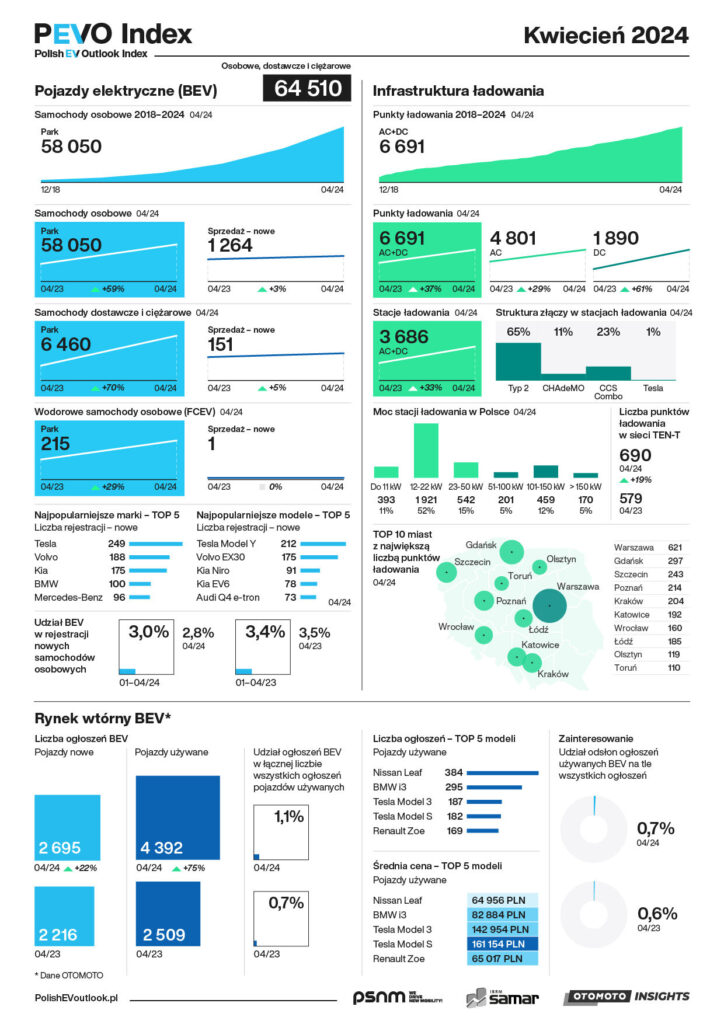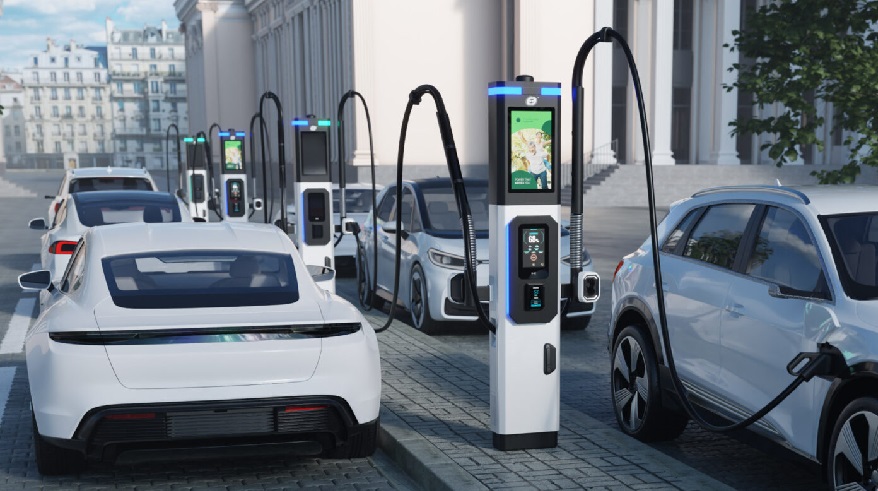The Polish Association of New Mobility (PSNM), the largest industry organization shaping the electromobility and hydrogen technology market, published a report indicating the nation’s progress in this sector.
The document specifies that, by the end of April 2024, Poland reported the registration of 64,510 electric vehicles (EVs), including passenger cars, delivery vans, and trucks.
Of these, 58,050 are passenger cars, representing a year-on-year growth of 59 per cent.
Additionally, registrations of new zero-emission cars reached 1,264 units, a three per cent increase, completely shifting the paradigm from the previous year.
Tesla, Volvo, and KIA led sales in the Polish market, which represented 2.8 per cent of total EVs in the third month of this year.
Electric Trucks and delivery vans also saw a notable increase, reaching 6,460 units, which is a 70 per cent growth compared to the previous year.
Why this progression?
Perhaps it is related to the addition of 201 new charging points to the territory.
Thus, by the end of the mentioned period, Poland had 6,691 public charging devices, that means a 37 per cent year-on-year increase.
Of these, 4,801 are alternating current (AC) points, a 29 per cent increase from the previous year, and 1,890 are direct current (DC) fast chargers, which grew by 61 per cent.
In terms of geographical distribution, Warsaw leads in infrastructure with 621 devices, followed by Gdańsk with 297, Szczecin with 243, Poznań with 214, and Kraków with 204.

In the sector, a prominent opinion exists: the key to attracting new consumers to electric cars lies in the availability of an extensive network of charging devices.
A vast infrastructure not only represents convenience and comfort for EV owners but also alleviates the concern of limited battery range.
Once the data is analyzed, it is time to address the following question: what do these numbers mean for Poland?
In the sector, there are differing opinions on whether this development is sufficient to bring about a radical change in the realm of electric mobility, especially considering that the Alternative Fuels Infrastructure Regulation (AFIR) came into effect on 13 April, setting ambitious targets that European Union (EU) member states must meet in the short and long term.

On one hand, there are somewhat more optimistic figures, such as Krzysztof Burda, President of the Polish Chamber of Electromobility Development (PIRE), who asserts that they are in “a good position because the number of charging stations increases every month”.
However, he also points out: “We have some charging points, but most of them are standalone, a charger with two or three points, and that is not the ultimate goal of AFIR”.
“Our goals are completely different and we need to build more challenging points related to the regulation,” he adds.
Read more: PIRE: “Poland remains an attractive market for CPOs

Conversely, in a discussion with Mobility Portal Europe, Grzegorz Cor, program manager of PIRE, bluntly states: “I can easily say that Poland could not meet AFIR in these conditions. I don’t think we can achieve the efforts, the money, and the current situation”.
His stark declaration stems from a recent journey where he travelled over 1,000 kilometres in a Tesla, specifically through France and Spain, to test the range of electric cars.
There, he encountered the stark contrast between those countries and his home state due to the numerous charging stations in the former two.
Cor explains the reason for this disparity: “The previous government over the last eight years was not doing enough. Maybe this new administration will, but it is still in formation,” he states.






